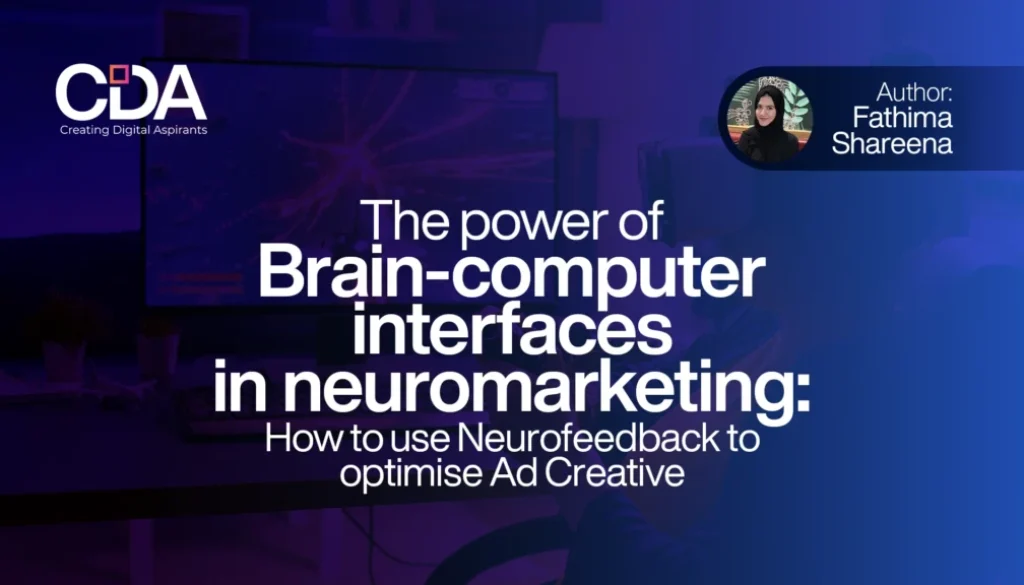The Power of Brain-Computer Interfaces in Neuromarketing: How to Use Neurofeedback to Optimize Ad Creative
In the current digital landscape, grasping consumer behavior has become more intricate. While traditional market research methods provide valuable insights, they often depend on self-reported data, which can be skewed or unreliable. This is where neuromarketing, a discipline that applies neuroscience to decode consumer behavior, becomes relevant.
Table of Contents
What is Neuromarketing?
Neuromarketing utilizes neuroscience techniques to assess physiological and neural reactions to marketing stimuli. By examining brain activity, eye movements, heart rate, and other biometric indicators, marketers can uncover insights into consumers’ subconscious preferences and feelings.
Brain-Computer Interfaces: The Gateway to Neuromarketing
BCIs are technologies that facilitate direct interaction between the human brain and external devices. By monitoring brainwaves, BCIs can offer immediate insights into how consumers process information, feel emotions, and develop brand perceptions.
Neurofeedback: Enhancing Ad Creativity
Neurofeedback is a method that employs real-time brainwave data to help individuals learn to control their brain activity. In the realm of neuromarketing, neurofeedback can be utilized to refine ad creativity by assessing viewers’ brain reactions to various ad versions.
How Does Neurofeedback Function in Neuromarketing?
- EEG Measurement: Electroencephalography (EEG) is a non-invasive method that captures brainwave activity through electrodes placed on the scalp. EEG data can pinpoint specific brain areas and neural networks activated during exposure to advertising stimuli.
- Real-Time Analysis: Sophisticated algorithms evaluate the EEG data to detect patterns linked to positive or negative emotional reactions, engagement, and memory retention.
- Ad Creative Enhancement: By analyzing brain responses to different ad variations, marketers can determine the most impactful creative elements, including color, sound, imagery, and messaging.
The Apple Case Study: A Look into the Future
Apple has been at the forefront of utilizing BCI technology for neuromarketing research. Here are some significant examples:
- The “iBrain”: In 2009, Apple applied for a patent for a “brain-computer interface device” designed to control electronic devices or deliver personalized advertising experiences. Although it never made it to market, it showcased Apple’s commitment to exploring BCI potential.
- The “Think Different” Campaign: Research utilizing EEG has demonstrated that Apple’s famous “Think Different” ad campaign triggered strong emotional reactions and boosted brand loyalty among consumers. This underscores the effectiveness of neuromarketing in identifying successful advertising strategies.
- The Apple Watch: While not a conventional BCI, the Apple Watch features sensors that monitor heart rate, activity levels, and sleep patterns. This information can be leveraged to craft personalized marketing messages and offers tailored to individual lifestyles and preferences.
Ethical Considerations in Neuromarketing
While neuromarketing holds great promise for enhancing marketing effectiveness, it also brings forth significant ethical issues. It is essential to ensure that neuromarketing practices are conducted responsibly and ethically, safeguarding consumer privacy and preventing manipulation.
The Future of Neuromarketing with BCIs
As BCI technology progresses, we can anticipate even more groundbreaking applications in neuromarketing. Here are some possible future advancements:
- Real-time ad personalization: BCIs could allow advertisers to present tailored ads based on immediate emotional and cognitive responses.
- Improved product development: BCIs might be employed to collect consumer feedback during the product development phase, ensuring that offerings align with consumer needs and desires.
Conclusion
The integration of brain-computer interfaces and neurofeedback into neuromarketing represents a significant step forward in understanding consumer behavior. By leveraging these powerful tools, marketers can unlock the secrets of the human mind and create advertising campaigns that truly captivate and convert.
Author Info
Fathima Shareena, a freelance digital marketer in Trivandrum.
Learner of CDA Online Digital Marketing Courses.




